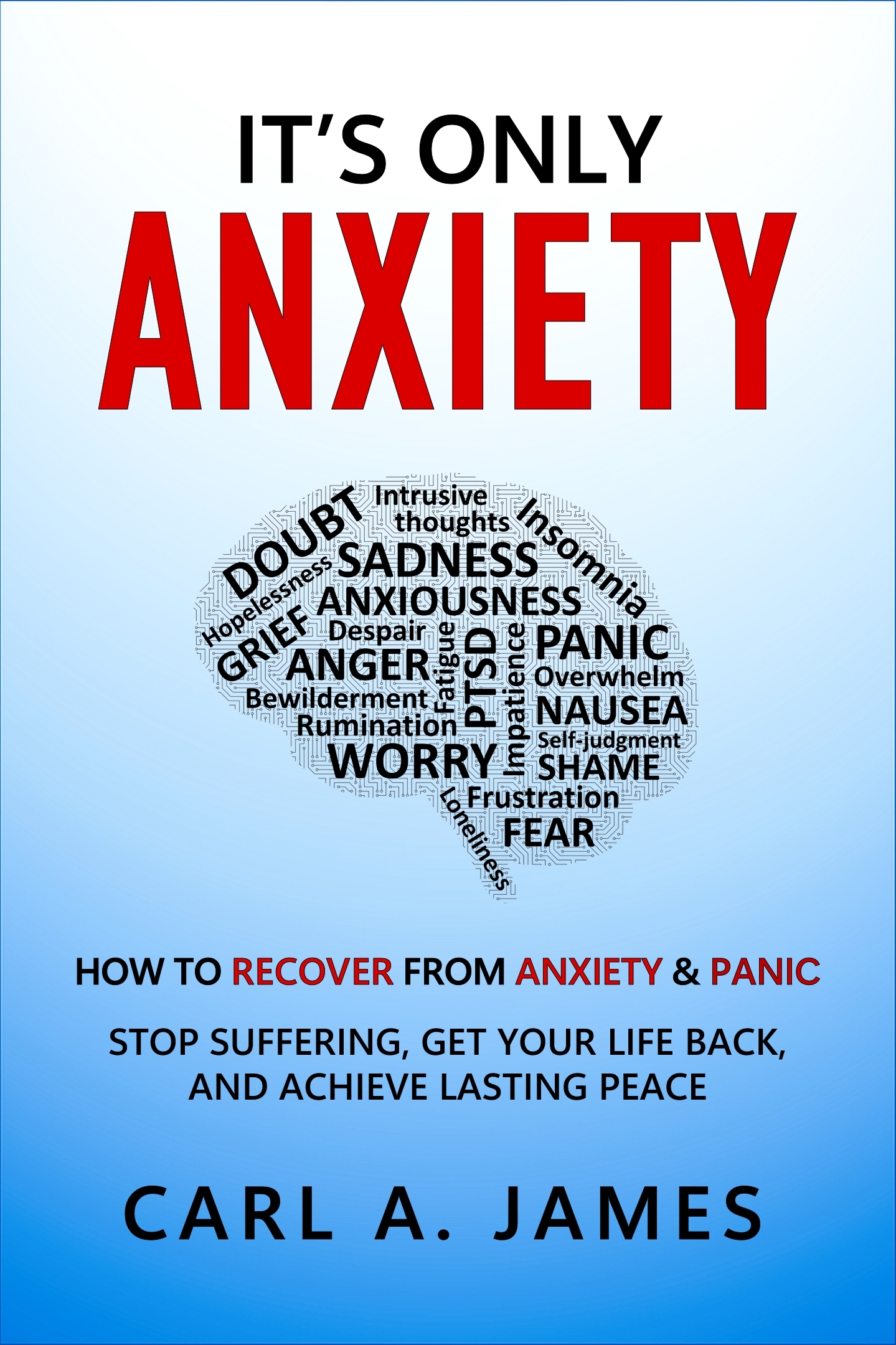I have covered the acceptance approach to the recovery from anxiety on this website in the section titled: “The Method”. However, this is a very superficial explanation. Even though the principles of this approach are very simple, in practice it is not easy to master.
My book “It’s Only Anxiety: How to Recover from Anxiety & Panic” explores this in much greater depth. It also addresses many of the obstacles, struggles and pitfalls that people encounter when they try and apply this approach in their own lives.
The acceptance approach/method bears repeating here. Each time it is written it is expressed a little differently, and that allows for our brains to absorb it a little deeper. Sometimes a particular way of saying it clicks with someone, or the fourth or seventh or twenty third time they read it, it suddenly makes sense to them.
So here is another expression of the Acceptance Approach:
Preparation
Read my book or Claire Weekes’ books over and over again from start to finish. And then read some more. And then read again – for weeks & weeks. This repetition is absolutely necessary to change your thinking and your attitude to anxiety.
It doesn’t matter if you feel you know it all, or you are tired of the book, or you don’t want to think about anxiety anymore. Read it again. You must confront your anxiety and your fears, and overcome the resistance and inertia that is preventing your recovery.
Step 1
Face. Instead of turning away from the anxiety, turn towards it. Move into it. Try not to give in to your dislike or hatred of the anxious feelings, or your fear of them. They are harmless. It is safe to face your anxiety.
My favorite quote from Joseph Campbell applies here: “The cave you fear to enter holds the treasure you seek”. If you wish to recover from anxiety, you must be prepared to immerse yourself in it.
Step 2
Allow and accept these emotions, feelings, and physical symptoms for as long as they stick around. Don’t try to get rid of them. Don’t try to stop them coming back.
Practice facing and allowing your emotions and physical symptoms (all of them) without judgment, and as fully and willingly as possible. Do this while ignoring your anxious thoughts. The thoughts are meaningless and just drag you down the rabbit hole. The feelings are important, and must be experienced fully until you emerge naturally on the other side of them.
Step 3
Surrender, and float through your day (go with the flow). Sag your body physically whenever you notice you are tense.
This is where you learn to give up the tension and anticipatory anxiety. This is where you learn to live in the moment, and let life unfold in its own way in front of you. It is where you learn to give up trying to control everything, and find out that when you do let things happen, the world doesn’t come crashing down, and you don’t die. It allows your nervous system to desensitize and calm down.
Step 4
LET TIME PASS. Recovery takes time. Being impatient will work against you. Put the clocks and the calendar away. Stop looking for progress. Just practice and let time pass.
Recovery happens on its own schedule, and the timeframe is different from person to person. However, think in terms of many months, even a year or two, rather than hours, days or weeks. That may sound like an unacceptably long time, but you will experience profound improvements in your level of peace and your quality of life long before your recovery is complete. If you cut the journey short because of impatience, you will simply be back at a later time to complete the job. Why not take as long as it takes, and recover the right way the first time.
Step 5
Be kind to yourself. Treat yourself like you would a very dear friend. Lower your expectations for yourself. Don’t judge yourself or criticize yourself. Be supportive of yourself.
Anxiety sufferers are notoriously hard on themselves, and yet remarkably compassionate with others. This makes no sense. Why wouldn’t you be just as kind (if not more so) to yourself? Because deep down you feel you don’t deserve it. You are ashamed of your anxiety, the way you feel, and your inability to change it. You think you must recover before you deserve your own kindness. But that is back to front. In reality, you must be kind to yourself in order to lift the shame you feel, and to recover.
Step 6
Build your inner voices of truth and acceptance. These are at the core of the change you make to your way of thinking about anxiety and responding to it.
Without these strong inner voices, even if you achieve a level of peace you will fall back into the anxiety rabbit hole when sufficiently triggered. With properly strengthened right inner voices, you will always respond to anxiety the right way (facing with acceptance), and your recovery will be a permanent one. This final step is crucial if you wish to make a complete and indestructible recovery.








